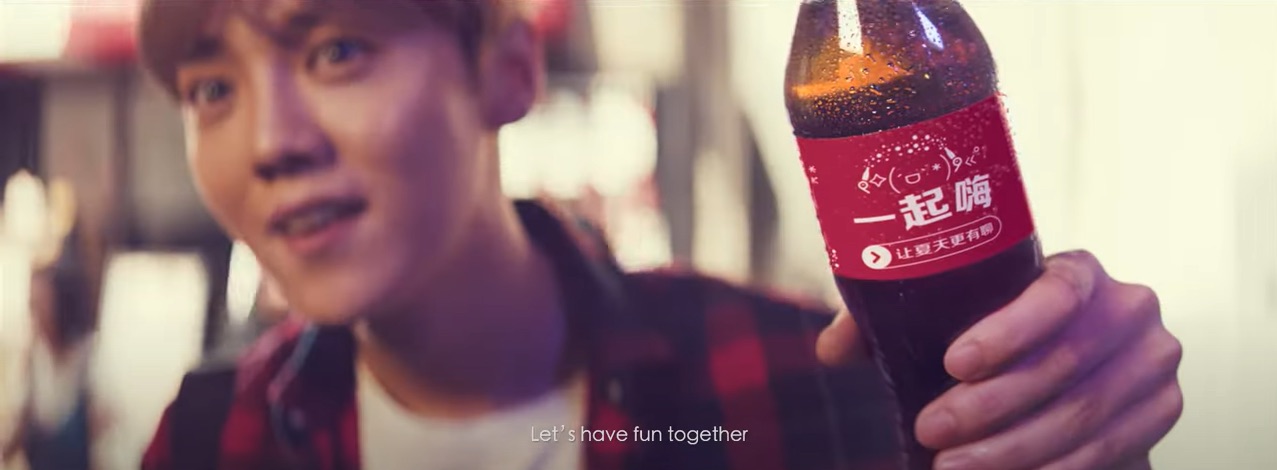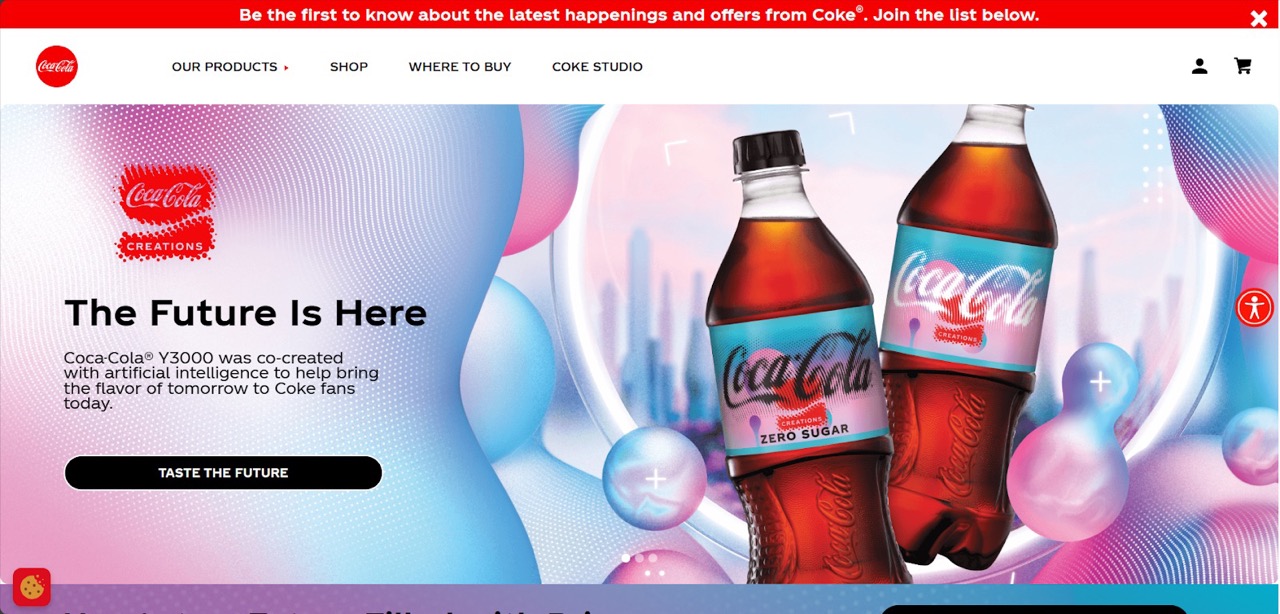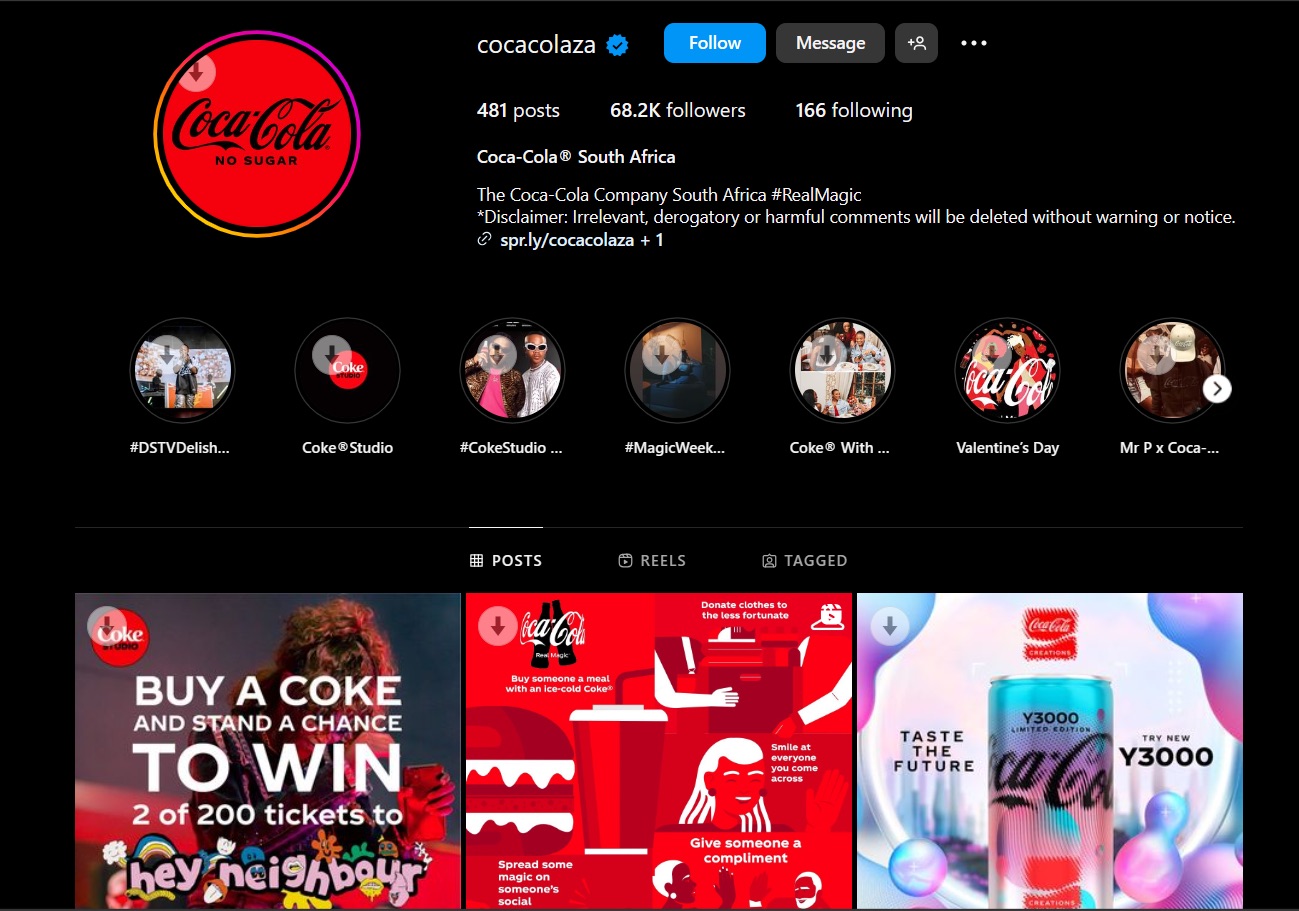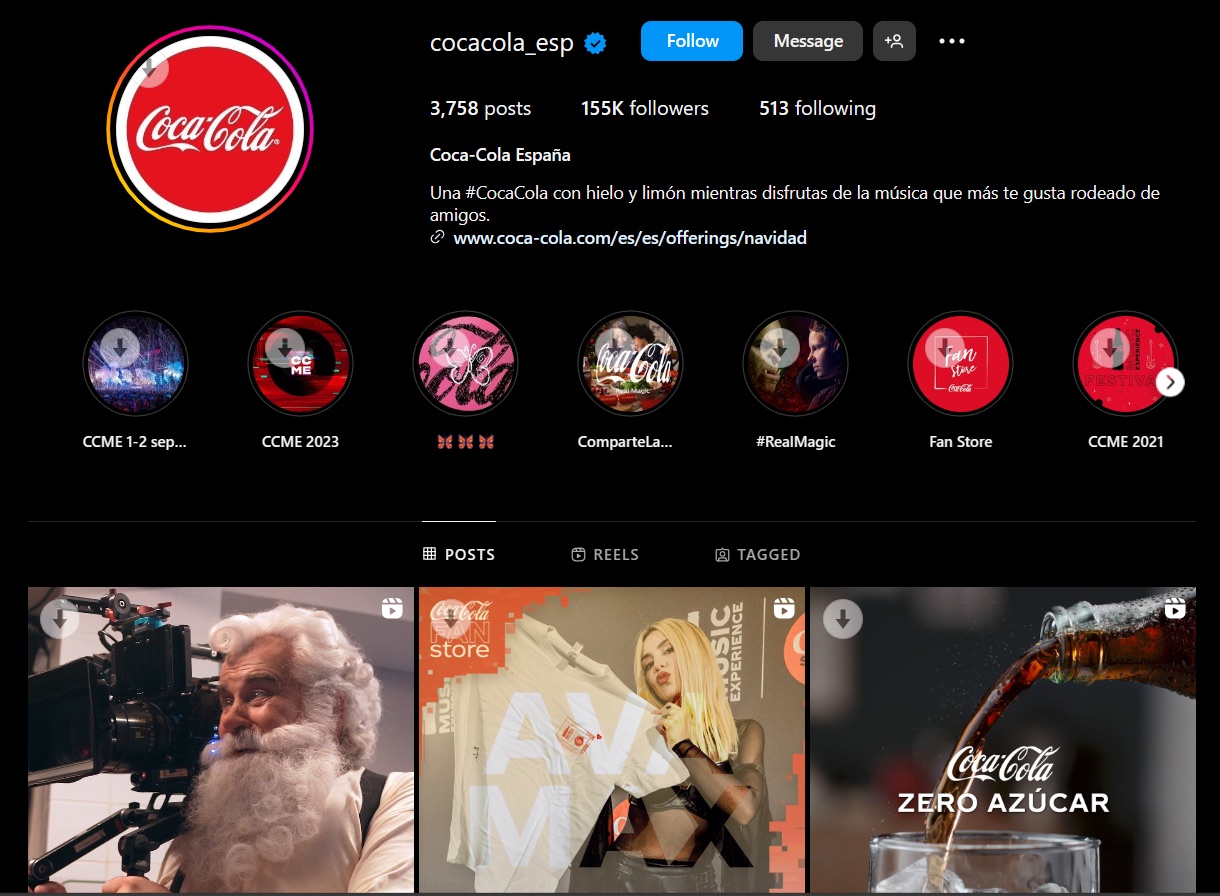Imagine this... Someone online recommends that you try out a hosting service called Opedia. The person told you about all the juicy stuff Opedia has...
Content Localization Strategy: How Cocacola Targets Customers In Every Continent
-
8 mins read
-
December 8, 2023

How does it feel to have millions of customers in over 200 countries?
Coca-Cola is one of the few companies that understand this feeling. The company started 131 years ago in the United States, and today, it’s become a household name in different parts of the world.
Question is…how did Coca-Cola get into almost every refrigerator across the globe?
Well, that’s the power of a great product, and of course, content localization.
In this article, we’ll show you how Coca-Cola targets customers in every continent using brilliant content localization strategies. With this, you’ll learn how you can replicate the same for your business.
LFG!
Coca-Cola’s Content Localization Strategy
Content localization helps you modify your existing business content to fit the culture of a particular target audience. This process makes your business offering instantly familiar and relatable.
For example, it’ll be better to convert your business content to Spanish before launching into a Spanish market.
Now, to be able to do all these, you need a solid content localization strategy.
Coca-Cola describes its content localization strategy as “hyper-localization.” The company uses region-specific content for product packaging, advertisements, social media posts, and almost everything else.
Let’s see a few examples of how Coca-Cola implements its content localization strategies.
1. Product Design and Marketing Campaigns
In the West Bengal region of India, the labels of Coca-Cola drinks are written in Bengali.
 Image source: Livemint
Image source: Livemint
When you move over to China, you’ll also see Coca-Cola drinks featuring Chinese names on their packaging.
A few years back, Coca-Cola launched a campaign in China called “Code Bottles.” This campaign featured Coca-Cola bottles with labels that used codes and symbols popular among Chinese youth.
The Code Bottles campaign was designed to appeal to more than 355 million teenagers living in China at the time.
See the image below from a 2017 Code Bottles video ad.

Coca-Cola’s “code bottle” ad in 2017
What about the famous “Share a Coke” campaign?
That’s another super-successful Coca-Cola campaign that touched almost every part of the planet.
The campaign featured drink bottles with Coca-Cola’s name replaced on one side by the phrase “Share a Coke with” followed by a common first name.
With millions of bottles rolled out, many people were happy to see their first name printed on a Coca-Cola bottle.
What made this campaign successful wasn’t the names alone, but that they were written in native languages.
See the images below:

Image source: Bevindustry
For each region, Coca-Cola used the appropriate local language for writing and designing the drink labels.

Image source: Minimeinsights
What a genius idea.
The “Share a Coke” campaign shows how important it is to consider customers’ language, culture, and tradition when selling to them.
Besides drink labels and video ads, Coca-Cola’s localization strategy also covers its online content. So let’s have a look at how that works.
Localized Website Content
Like Netflix, KFC, Spotify, and others, Coca-Cola also uses location to customize what you see on its official website. The website features a country selector button at the bottom of each page to help you explore different regions.
Whenever you click the country-selector button, you’ll see this image below.

And immediately you switch to a different region, every text on Coca-Cola’s website gets automatically translated into the language of that location. However, it’s not just about the multi-language functionality; the website’s overall design also changes to fit your chosen location.
As at the time of this blog post, here’s what the homepage for the United States looks like: 
And when you switch to the Republic of Korea, the homepage transforms into this:

Then we switched location to Columbia, and this is what came up:

This all shows how Coca-Cola uses location to present unique landing pages to each website visitor, thereby reflecting the culture and language of each visitor’s country.
3. Localized Social Media
This is yet another excellent example of Coca-Cola’s hyper-localization.
The drink company operates different social media channels for each region it serves. Each country’s social media handle, description, links, and overall content are unique.
For instance, this is what Coca-Cola’s Instagram page for South Africa looks like.

And when you check the IG page for India, this is what you’ll see:

You can also check out Coca-Cola’s España page:

With multiple social media channels, Coca-Cola feeds its audience in each country with locally inspired and unique content. This is one of the open secrets behind the company’s global reputation and yearly profit.
And speaking of profit, let’s briefly discuss how Coca-Cola makes more money using the localization strategies we’ve discussed
How Coca-Cola Drives Revenue with its Content Localization Strategy
Is Coca-Cola even making money with its hyper-localization?
Yes.
Coca-Cola’s revenue has kept rising consistently in recent years. According to Macrotrend’s recent data, the company’s revenue for the past twelve months, ending June 30, 2023, was $44.140B, a 6.82% increase year-over-year. This follows an 11.25% increase in revenue from 2021 to 2022 — and a 17.09% increase from 2020 to 2021.
These figures tell us one thing: Coca-Cola’s marketing strategies do work.
And beyond the profits, Coca-Cola’s hyper-localization approach also contributes to the company’s popularity worldwide. In 2021, VentureCapitalist named Coca-Cola among the top 100 companies in the world.
Now that we know Coca-Cola’s localization strategies work great, let’s discuss how each system drives revenue growth.
1. Localized Packaging and Distribution
Using local packaging and distribution helps Coca-Cola save huge annual operating costs.
Coca-Cola has a global distribution network covering North America, Latin America, Europe, the Pacific, Africa, and Eurasia. The company’s local bottling partners produce, label, and ship to local agents. These agents use local road transport to get Coca-Cola’s products to stockists, distributors, retailers, and customers.
With this, Coca-Cola saves vast sums on foreign exchange for its production, packaging, and distribution worldwide.
You may also notice that Coca-Cola has a supply chain to recycle glass bottles. This is yet another effective way the company saves costs and resources while maximizing profit.
2. Localized Promotions
Coca-Cola spends up to $4 million yearly on localized promotions across different continents.
The company uses its localized promotions and campaigns to win the hearts of new customers and retain existing ones in different regions. Coca-Cola also partners with local celebrities in each region to create outstanding promotional campaigns that resonate with people.

The famous Gigi Hadid featured in a Coca-Cola campaign
These campaigns with celebrities make people trust Coca-Cola and buy easily. With this, the company maintains stable sales records worldwide, despite the presence of local competitors.
Coca-Cola also uses its social media accounts to announce region-specific offers, introduce new or rebranded products, and celebrate special holidays with people in different countries.
All these help Coca-Cola connect better with its target audience and maintain an evergreen reputation.
And the effect?
Steady sales every year, coupled with stronger relationships with customers.
What You Can Learn From Coca-Cola’s Content Localization Strategy
There are several lessons to learn from Coca-Cola’s strategies.
But hold on.
We have to admit we can’t possibly cover every tiny detail in this one post, so we’ll summarize the key takeaways you can easily adopt.
-
Offer Localized Products and Variations
There’s no need to force the same product down everyone’s throat.
Notice how Coca-Cola creates different variations of its drinks for specific countries and target audiences? In India, you will find Vio spiced buttermilk, and in South Africa, you’ll see the Sparletta cream soda variant.
You can consider creating unique variants of your products or service packages for specific regions only.
-
Use Visual Content
Coca-Cola doesn’t just talk the talk; they walk the walk in their localization strategy.
Their strategy extends beyond words to visuals, to —images, designs, and videos. They use colors, graphics, and cultural nods in advertisements and packaging to connect with their audience. They also collaborate with local ad agencies to ensure their marketing messages resonate with local audiences.
You should pay attention to these things when crafting your own content localization strategy.
-
Adopt Local Manufacturing and Distribution
Coca-Cola has factories in many countries, which reduces logistics costs and environmental impact. This also allows them to tailor their products to local tastes.
The company collaborates closely with its local workforce to experiment with different flavors and ingredients.
When feedback is needed, Coca-Cola gets authentic information directly from individuals within its target market.
-
Use Original Marketing Content
Coca-Cola doesn’t just translate English ads to other languages and stop there.
They often collaborate with local actors, actresses, musicians, and influencers to create original marketing content that will appeal to a specific audience.
Put simply, Coca-Cola makes its target audience feel like the ads they see are specially made for them, which increases the conversion rates of those ads.
-
Have Cultural Sensitivity
Coca-Cola often shows in-depth cultural knowledge in many of its localized campaigns. This shows that the company recognizes the cultural nuances in various regions.
So, be careful not to overstep cultural boundaries when localizing your content for any target region.
FAQs
1. How Does Coca-Cola Target Its Customers?
Coca-Cola is a global brand that sells to people of different cultures, customs, and climates. As a result, the company targets different segments of the population.
It also adjusts its products to suit local tastes, such as making its Asian version sweeter than its version in other countries.
2. What Strategy Did Coca-Cola Use To Become Global?
Several factors drive Coca-Cola’s global expansion. The company leverages innovative marketing campaigns, strategic partnerships, and a constant commitment to providing high-quality products that consumers enjoy.
Coca-Cola tailors its campaigns to appeal to the cultural nuances and preferences of specific regions and countries.
It often incorporates local celebrities, traditions, and languages in its advertisements, which helps to create a stronger connection with consumers and foster brand loyalty.
But more importantly, content localization is a powerful factor that has helped Coca-Cola maintain a global reputation for many years.
3. How Does Coca-Cola Adapt To Other Countries?
Coca-Cola’s products are standardized, but the company has introduced localized flavors to cater to the taste preferences of customers in various regions.
For example, Coca-Cola has introduced new flavors like Green Tea and Muscat Grape in Japan. Similarly, Coca-Cola offers Thums Up drinks in India with a stronger flavor many locals enjoy.
What Should You Do Next?
Take action.
With all you’ve read about Coca-Cola’s localization strategies, you shouldn’t doubt whether content localization is right for your business.
Leverage what you’ve learned about how Coca-Cola targets customers in every continent, and do something similar for your business.
Consider implementing localized website content, social media pages, and marketing campaigns. If you have physical products, consider localizing your production or distribution process to cut costs and maximize profit.
Take as much cue as you can from Coca-Cola’s global marketing strategies to reach your target customers.
Adios Amigos.
